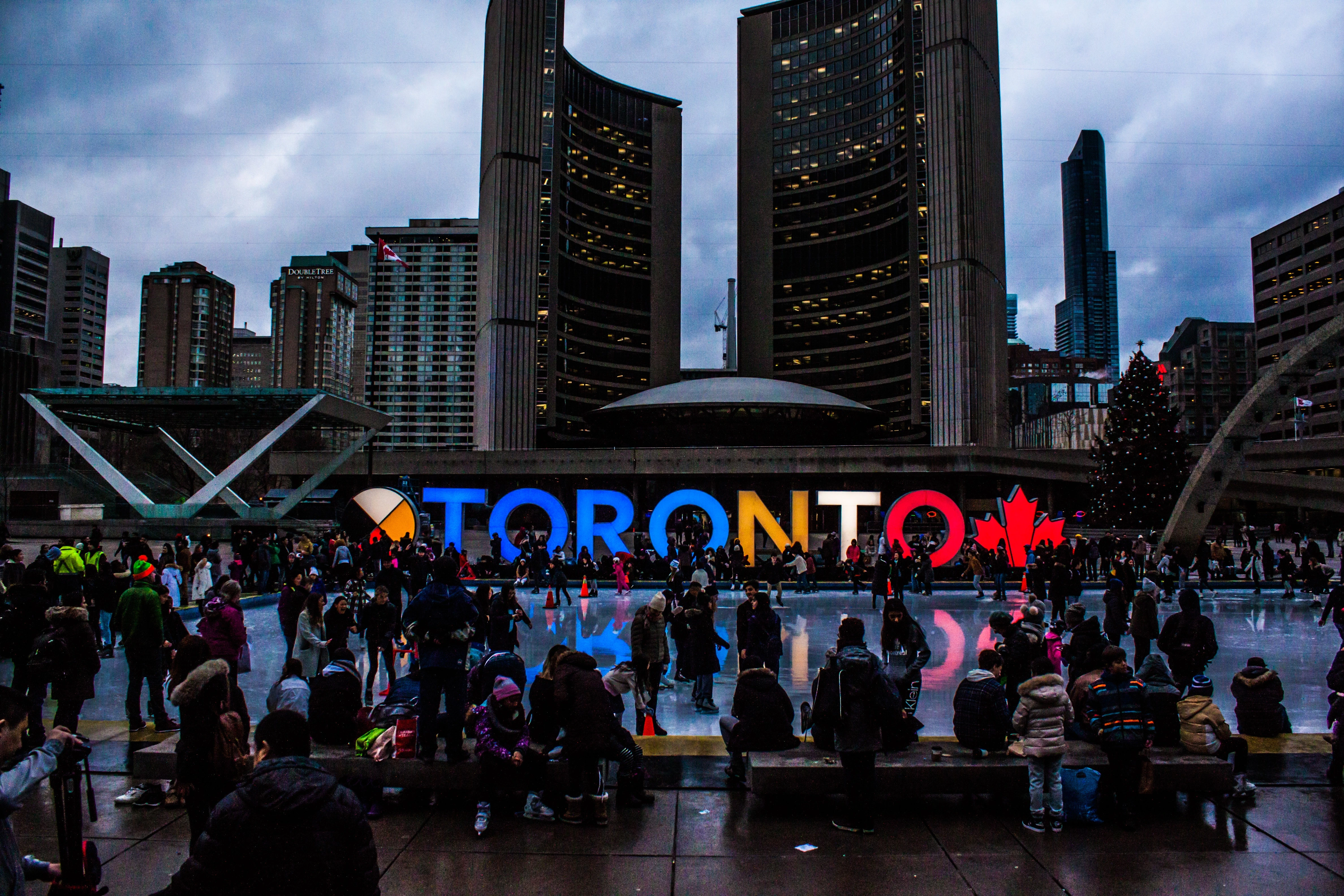Sample by My Essay Writer

The population of Canada is one that can be examined in a large variety of ways. Canada is a very large country, and thus contains a diversity of demographics that are all Canadians. The population can be broken down along provincial borders, or along political lines. The age distribution can also be examined, as can the many different populations of First Nations Canadians. However, a more interesting way of examining the population of Canada is by taking note of its inherent multiculturalism. Canada is a country that is made up of people from a wide variety of countries around the world, and consists of both older families and ones composed of newer immigrants. Canada also gains many new citizens by means of accepting refugees from less stable countries. All of these factors lead to Canada having a complex society built on a multifaceted culture. This paper will examine Canada’s population through discussion if immigrants, the language issues those immigrants face, refugees, and the children of immigrants. In doing so, some insight on Canadian culture will be gleaned.

?
Canada is well known for having a very multicultural population, especially in the country’s urban centres. Much of this multiculturalism comes from rather open immigration policies, which lead to large immigrant populations in cities. Due to this interesting aspect of the Canadian population, many studies have been done in order to provide information on exactly how Canada’s immigrant population functions compared to the rest of society. However, too often does a writer or a study attempts to explain the immigrant population without taking into account the fact that Canada gets many different immigrants from many different countries, all of which take to their new home in very different ways.
Melanie Knight provides an example of how complex the study of immigrant populations can be in her article, “Black Canadian self-employed women in the twenty-first century: a critical approach” (2004). In this article, Knight zooms in on the issues that are faced specifically by Black women in Canada. Furthermore, she focusses specifically on the experiences Black women have in regard to business and entrepreneurship. By limiting her research to such a specific issue faced by a specific group of people, Knight is able to come up with findings that are often overlooked by broader studies in immigrants in general. For example, she finds that, “Much of the literature analyzing Black business activity in Canada often describes it as being very low…Black women are invisible in this literature” (2004, p.105). This distinction demonstrates that fact that even when focussing on a specific racial group, information will be lost if gender is not also accounted for. Thus, a study that does not even take race into account will obviously miss important facts about specific socio-cultural groups.
An example of a much broader study can be found in K. Bruce Newbold’s article, “Linking immigrant settlement, health, housing, and homelessness in Canada” (2010). In this article, Newbold takes a very broad set of issues and applies them to Canada’s immigrant population as a whole. The result of this lack of specificity is an article that is very vague, and provides little information that can be put to good use. For example, when describing the relationship between immigrants and health care, Newbold writes the following: “immigrants may also experience other barriers to the use of health care facilities, including those created by acculturation stress, social exclusion, gender, culture, or language” (2010, p. 29). Here, Newbold brings up many possible barriers between immigrants and public health care, but fails to offer anything conclusive. A more focussed study may have been able to locate the specific problem facing a certain group, which could have been the first step towards finding a solution. Thus, it is very important to examine Canada’s immigrant population as a group of groups, and not a homogenous mass.
Of course, Canadian multiculturalism is much more complicated than simply being an issue of immigration. Even many years after families have come to Canada, they are still considered part of the cultural mosaic, even if they might not be considered part of the immigrant population anymore. These people are occasionally referred to as the English speaking parts of the population, to differentiate them from the newly arrived who might not yet have a grasp of the language. This choice of nomenclature, however, causes some problems due to the fact that Canada is not an entirely English speaking country. In her essay, “On the dark side of the nation: politics of multiculturalism and the state of Canada” (2000), Himanji Bannerji writes about the effects Canada’s English/French split has on multiculturalism. Specifically, Bannerji makes note of, “the binary cultural identity of the country to whose discourse, ‘new comers’ are subjected” (2000, p. 91), which makes clear the fact that even after taking into account that Canada is multicultural, there are other divisions among the populace. For example, an African person who moves to Ontario will be put in a very different cultural position than an African person who moves to Quebec, simply because each person will have to learn a different new language in order to adapt. The result of this division is that even two people from the same city might end up as very different Canadians, due to the language barrier. Conversely, two people from very different cultures might be given some form of unity if they find themselves on the same side of the language divide. The split between English and French speaking Canada is a piece of the culture that exists alongside any multiculturalism, and is an equally important piece of Canada’s national identity.
A very important part of immigration in any country is the issue of refugees. Many countries will take in refugees for a variety of reasons: some people flee wars, others flee religious persecution, and others face racial discrimination. Alexandra Mann writes about Canada’s stance on refugees, noting that, “Compared to other ‘immigrant nations,’ such as Australia, Canada has a strong tradition of granting protection to those who meet the definition of ‘refugee’ in the 1951 Convention relating to the Status of Refugees” (2009, p. 191). However, Mann also points out that it has become much more difficult for refugees seeking asylum in Canada, writing, “the very concept of the refugee is being eroded in Canadian society and replaced with the image of the illegal migrant” (2009, p.191). To summarize Mann’s argument, she states that one of the big reasons that Canada has become so much harsher with potential refugees is that these refugees are rarely in a position that allows them to apply for Canadian citizenship through the proper channels. In this way, refugees are often equated with illegal immigrants, and are thus treated more like criminals than victims of persecution. This change in perception has led to Canada accepting much less refugees over the years, making refugees a much smaller portion of Canada’s immigrant population. To put it bluntly, whether or not a person is a refugee has very little effect on how they will act as a citizen, and so restricting refugees from entering Canada will not have a tremendous impact on society. Rather, the issue of refugees is almost entirely an issue of reputation. Accepting people in need from less fortunate countries is a policy with obvious humanitarian motives. By accepting many refugees, Canada is proving its commitment as a nation to providing shelter to the needy, regardless of their country of origin. By putting restrictions on refugees, Canada as a nation appears callous and pragmatic, putting immigration laws above people. Of course, neither position can really be said to be objectively right; within Canada there will always be people supporting both sides of the argument. In the end, although the issue of refugees might be an important moral issue to some, it does not have a huge effect on Canada’s culture on a large scale.

Bridging the gap between families of new immigrants and families that have been in Canada for generations are those people that occupy the second generation. These are the children and other young people of immigrant families, who are either born in Canada or are brought over at a very young age. These children are put into a unique position due to the fact that they have to grow up in a different country than their parents did. In effect, second generation immigrants have a barrier placed in between them and their parents, but also them and the society they are growing up into. Each of these barriers has the potential to have a profound effect on their lives. Nicolle Gallant (2008) describes the barrier between first and second generation immigrants, and notes that many of them do not actually identify with their culture of origin. Specifically, she notes that, “When asked to spontaneously name the membership group or groups that define their identity (that is, the groups that are the most significant and characteristic of who they are), slightly fewer than half of the respondents (12 out of 28) mentioned a group connected with their parents’ country of origin” (2008, p. 47). These results are quite important, as they make it clear that even one generation can create a large gap between family members. Furthermore, it is clear that second generation immigrants often suffer from a lack of their own culture; they cannot identify with their native culture, but they are also somewhat cut off from Canadian culture. Miu Chung Yan, Surita Jhangiani, and Sean Lauer (2008) add more evidence to the second divide that second generation immigrants face in a paper on the difficulties they have in entering the job market. They find that second generation immigrants are forced to accept, “reduced pay, delayed pay or not receive overtime” (p. 119), which means that second generation immigrants face many of the same forms of discrimination that first generation immigrants do. Thus, second generation immigrants face problems in both spheres of life, being cut off from their parents’ culture and simultaneously not as accepted by Canadian culture as later generations might be.
As is apparent, the Canadian population is fairly complex. It has multiple immigrant groups, each of which takes to the country in a unique manner. Even after taking these groups into account, the languages in various Canadian provinces add even more complications. The issue of refugees adds a moral element to the addition of immigrants to the population, and the status of second generation immigrants proves that discrimination is a very real problem even in such a multicultural country. A full examination of each of these issues would take an immense amount of time, simply because each cultural group in Canada would need to be examined separately. However, the acknowledgement that these issues exist is the first step towards a better understanding of Canadian society.
References
Bannerji, H. (2000). On the dark side of the nation: politics of multiculturalism and the state of Canada. The Dark Side of the Nation: Essays on Multiculturalism, Nationalism and Gender (87-124). Toronto: Canadian Scholars’ Press Inc.
Chung Yan, M., Jhangiani, S., & Lauer, S. (2008). Preliminary understanding of challenges in entering the job market. Canadian Diversity, 6 (2), 118-120.
Gallant, N. (2008). Identity and political participation among young second generation immigrants. Canadian Diversity, 6 (2), 47-49.
Knight, M. (2004). Black Canadian self-employed women in the twenty-first century: acritical approach. Canadian Woman Studies, 23 (2), 104-110.
Mann, A. (2009). Refugees Who Arrive by Boat and Canada’s Commitment to the Refugee Convention: A Discursive Analysis. Refuge, 26 (2), 191-206.
Newbold, K. B. (2010). Linking immigrant settlement, health, housing, andhomelessness in Canada. Canadian Issues, Fall, 28-31.







